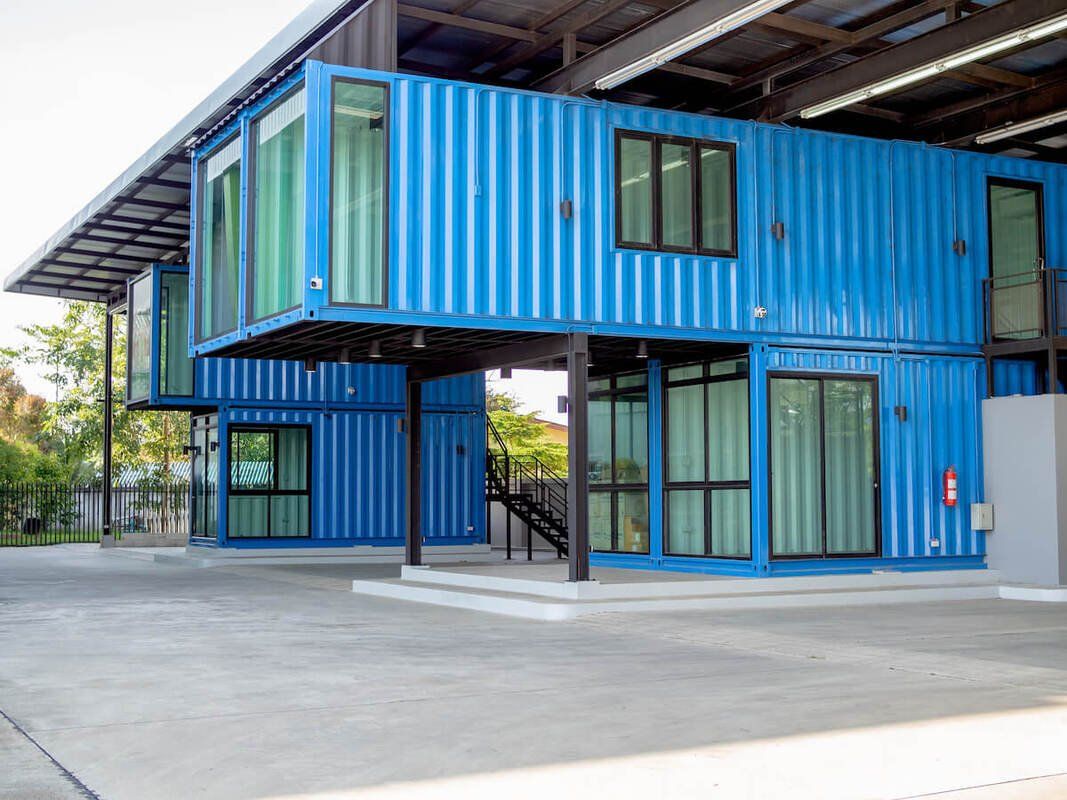Shipping container homes have been gaining a lot of popularity over recent years.
Many people today prefer these types of home compared to conventional ones as a result of the savings, flexibility and longevity.
There are many benefits to owning a shipping container home.
Among other reasons, shipping container homes are affordable, environmentally friendly, and highly durable. These homes also take just a fraction of time to construct and complete as well.
While container homes are easy to construct, a simple mistake can be costly.
You need to be careful when shopping for shipping containers to build a home, or when ordering an already assembled one.
Some of the most common mistakes you ought to avoid when building a shipping container home are outlined below.
Mistake #1 - Using the Wrong Shipping Containers
Although this depends on the owner's preference, it would be advisable to go for shipping containers with additional height for comfort.
The height of the container is one of the critical factors to consider before ordering a shipping container.
An additional inch in height makes a huge difference when building a container home. You can use the extra height for the ceiling, making it perfect for insulation. This isn’t always possible with regular containers though – doing so means you'll have to sacrifice valuable headroom.
Shopping with an experienced and reputable shipping home provider can bring you priceless peace of mind.
Mistake #2 - Overlooking Local Planning Regulations
Some people will disregard the local building and planning regulations when ordering or building their shipping container homes.
Failure to check with the local authorities to see if such structures are allowed and guidelines put in place for the same can have devastating consequences. Nothing frustrates more than being asked to take your shipping container down simply because it wasn’t constructed as per the local codes, or wasn’t authorised in the first place.
A home is quite a significant investment to lose simply because you didn’t take a minute or two to check with the local public works. It would, therefore, be advisable to check with the relevant bodies even before purchasing the shipping containers.
Building standards vary from one area to another. For this reason, it's best to check with the local authorities before commencing the construction.
You don’t want your home taken down simply because you didn’t follow the due procedure.
So reach out and chat to the experts at Container Homes to get the help and support you need.
Mistake #3 - Using the Wrong Materials for Insulation
Several factors ought to be considered when choosing an insulation material for your new container home.
Some of the main factors to consider include:
budget
local climate
the preferred style for your home
and how old the container is.
If you live in an area that receives lots of rain, then the insulation should provide a seamless vapour barrier. For drier climates, you'll need an insulation material capable of keeping the container home cool enough.
Unlike popular belief, spray foam insulation may not be the best choice for all circumstances. You’ll need to consider other applicable options, including eco-friendly insulation (e.g. recycled newspapers), blanket insulation and insulation panels.
It would be advisable to choose the best type of insulation for your home based on the climate and other prevailing conditions. If you aren’t sure of what insulation materials to use, a certified local contractor might be able to help.
The wrong type of insulation, or even worse, no insulation at all, can make your container home uninhabitable.
Lack of proper insulation means the container home will be too hot during summer, and freezing cold in winter.
You will also have to deal with condensation and dampness in the house, factors that could lead to mould and mildew growth among other vices. Condensation is particularly bad for container homes for it accelerates rusting.
Looking to do more with your container? Find out how to renovate your container home here.
Mistake #4 - Making Too Many Modifications on The Steel Containers
Shipping containers are built to withstand many factors, including weight.
While designed to be strong, making too many modifications on them, by cutting lots of steel out, can compromise the container's integrity and strength. These containers are designed to be strong, with their boxy shape coming in handy for various configurations.
That said, you don’t need to cut lots of steel to accommodate a feature or two – doing this only makes the container/home weak.
According to the plumbing experts from On Tap Plumbing, minor changes to accommodate additional pipes or other necessities won’t pose too much of a problem. They explain “the worst mistake you can make when building a shipping container home is cut out large sections of steel from the containers. The more you cut, the more you risk the integrity of your new home.”
If you have to cut large parts of the steel due to unavoidable circumstances, you'll then need to reinforce it by welding steel beams in place. These beams will help restore its structural integrity and strength.
Welding steel beams, however, means you have to spend more time and money on the project. It is worth noting that you can remove sections of the steel for windows and doors without affecting its integrity.
And while many people worry about the space of a shipping container home, the storage experts from Uplift Removals explain this is often unwarranted. They say “people often worry about whether they have enough space to store their valuable possessions. In reality, there are a range of clever storage solutions perfect for container homes like wall hooks and extra cupboards and drawers under beds. Ask yourself if you really need every item you want to keep, and often you’ll be able to downsize more than you think.”
Removing entire walls however means you have to weld supporting beams.
Mistake #5 - Hiring an Unqualified Building Contractor
Like any other significant investment, everything needs to be done just right.
Contracting specialists KJ Concreting say, for this reason, you need to hire the right supplier for the job. They explain “your contractors should always have experience to back up their claims. For shipping container home experts you should look for several years of experience in the field, and especially in building shipping container homes.”
Your shipping home provider should not only be certified but also be enthusiastic and experienced in constructing this type of home. They should not only be certified, but also enthusiastic about delivering a high-quality service.
Building a shipping container home takes between a few weeks to 2 months to complete. You'll, therefore, need to hire a team willing to dedicate their time to the project with no distractions.
Hiring different contractors for the job only increases the risk of a low-quality job and finish.
What other mistakes have you encountered when buying a shipping container home?
Share your experiences and recommendations with us in the comments section below.





